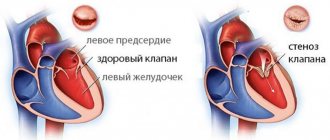What is ataxia in dogs
Ataxia in dogs is not an independent disease, but rather a concomitant symptom of other complex ailments characterized by impaired coordination of the animal’s movements while maintaining the strength of its muscles. The root cause of the disorder is usually damage to the nervous and muscular systems of the dog’s body, which in itself is very dangerous, not to mention the animal’s inability to have normal orientation in space.
Inconsistency in the work of the limbs when walking may well lead to injuries to the paws and fingers, causing additional discomfort to the dog, and head tremors do not allow normal eating and drinking. A sick pet will no longer be able to run, jump and climb stairs as before, and if there is partial or complete paralysis, bedsores may form and the general condition may deteriorate.
Why does cerebellar ataxia occur in dogs?
One reason is a gene mutation or heredity, due to which the puppy receives the disease from its parents. The following representatives of the canine world are most susceptible to gene ataxia:
- Cocker Spaniels (English).
- Old English Sheepdogs.
- Staffordshire Terriers.
- Kerry Blue Terriers.
- Hairless Chinese Crested.
- Scottish Terriers.
Responsible owners and breeders of these dogs perform special veterinary tests to determine the animal's ability to pass on the disease by inheritance. If the test is positive, the dogs are not allowed to be bred. But, unfortunately, heredity is not the only reason for the development of ataxia in dogs.
The disease can be provoked in a dog by head injuries that damage the brain (fall from height, collision with a car), neuritis and otitis, severe infectious diseases, brain tumors.
Types of ataxia
Based on the location of the problem, vestibular, cerebellar, sensory, sensitive, frontal and psychogenic types of ataxia in dogs are distinguished. They all have similar symptoms, but at the same time we must not forget about the characteristic differences.
Did you know? Translated from Greek, the name of the disease is understood as “disorder,” since the main manifestation of the disorder is erratic movement of the limbs and loss of body stability.
Vestibular
The vestibular type of ataxia is associated with lesions of the structures of the inner ear or brain stem, which disrupts the normal functioning of the vestibular apparatus as a whole. The main manifestations of such a disorder will be tilting the animal's head to the side, careful slow movements, dizziness and associated nausea. The dog may spin in circles or move chaotically in space.
Cerebellar
As the name suggests, this type of ataxia is associated with damage to the main center of coordination of motor activity - the cerebellum. It coordinates the animal's intentions to perform a specific movement with the further work necessary to successfully complete the process. Cerebellar ataxia manifests itself in dysmetria and symmetrical ataxia of the trunk, due to which the dog tries to spread its paws wide, thus maintaining balance. In rare cases, a tilt of the head and movement of the animal in a circle is noticeable, which is also characteristic of the previous type of ataxia. If you look closely at the eyes, you will hardly be able to notice that your pet’s gaze is fixed on one point - usually the pupils quickly move up and down, and in rare cases they have different sizes on the right and left eyes.
Sometimes a sign of cerebellar ataxia is tremor of the limbs when the pet is moving or at rest. In the first case, the characteristic symptoms of the disorder often appear when the dog tries to reach the intended goal (for example, a bowl of food). Postural tremor, characteristic of a calm state, is expressed in swaying of the body from side to side.
Sensory
Sensory ataxia usually occurs as a result of chronic inflammatory demyelinating polyneuropathy, diabetic polyneuropathy, medical and some other types of neuropathies. Often, such a disorder is caused by disorders associated with heavy metal poisoning, damage to sensitive neural nodes, or spinal cord injury. Disorders in the functioning of the cranial nerves are more likely to cause coordination problems in pets than anything else.
Important! The Romberg test is more often used when diagnosing people, but due to the similarity of the symptoms of the disorder, it may also be appropriate during the examination of an animal. The main thing is that the pet is not afraid of the blindfold and follows the owner’s commands.
Among the main symptoms of sensory ataxia, especially noticeable will be a deep disturbance of sensitivity in the dog’s limbs and damage to the nerves of the spinal cord, which manifests itself in partial or complete paralysis of the animal. A positive result of the Romberg test can also confirm the expected diagnosis: if, standing straight on its paws and closing its eyes, the pet begins to fall to one side, we can talk about the possibility of this problem.
Sensitive
Sensitive or proprioceptive ataxia is equally common in both dogs and cats, but in each case the main causes of this neurological disorder will be:
- intervertebral disc diseases;
- inflammation in the vertebrae and spinal cord;
- oncological processes;
- vestibular ataxia and the disorders that caused it in the form of otitis media, neuritis of the 8th pair of cranial nerves, tumors inside the ear and in the brain stem area.
Like previous types of ataxia, sensitive ataxia is difficult to treat and often turns out to be an irreversible process. True, it all depends on the timeliness of the treatment started.
Frontal
Frontal ataxia is the result of an inflammatory process or mechanical damage to the frontal lobe of the brain, although often the basis for such a disorder is a disruption of the cerebellopontine system. As in other cases, the main manifestations of frontal ataxia will be problems with coordination, tremors of the limbs, and in advanced cases, paralysis.
Did you know? The most famous tall dog in history was the Great Dane named Zeus, who died in 2014 at the age of five. In 2011, he was included in the Guinness Book of Records, because his height at the withers was 1.12 m with a body length of 2.23 m.
Psychogenic
The main manifestation of psychogenic (hysterical) ataxia is considered to be a disturbance in the dog’s gait, which is not a typical sign of organic damage to the nervous system. Sick animals move “along a broken line”, slide their paws as if skating and cross their limbs when walking. Some pets try to walk only on fully straightened legs.
Treatment of ataxia
If the owner’s desire to save the dog by any means overpowers the humane solution, then veterinary specialists will recommend using painkillers that relieve nervous tension. Of course, treatment is especially effective if a non-genetic cause of the disease is established. Anti-inflammatory, antispasmodic drugs, and B vitamins are prescribed. It is important to try to provide the dog with comfortable conditions that take into account lifelong characteristics. Brain damage is rarely completely cured. From the moment the diagnosis is made and the first symptoms appear, a disabled dog becomes completely dependent on people. Sensitive, attentive attitude will extend the life of your beloved pet for many years.
Sometimes it happens that we are unable to help our sick pets. One of the incurable diseases in dogs is ataxia, translated from Greek as “disorder.” This is a motor disorder, which is manifested by a violation of the coordination and consistency of the animal’s movements. Symptoms of the disease first become noticeable when the dog is 3 to 5 years old.
Why is it developing?
Despite the specific type of ataxia in the domestic dog, almost all of its varieties have common underlying causes.
The most common of them include the following:
- neoplasms, injuries and inflammations localized in the spinal cord area;
- infectious processes in the ears and various diseases of the vestibular apparatus;
- infections of the spinal vertebrae or discs;
- viral and infectious diseases affecting the brain stem or any other part of it (for example, plague);
- malignant neoplasms in the dog’s brain;
- deficiency of vitamin B1 in the body;
- metronidazole poisoning;
- decreased levels of calcium and glucose in the animal’s blood;
- problems with blood circulation, in particular caused by cardiovascular diseases;
- respiratory diseases causing complications.
Important! Sometimes the cause of disorders can be a genetic factor, which is why it is so important to buy puppies only from trusted breeders, making sure in advance that their parents have no health problems.
What breeds are predisposed to the disease?
Considering the extensive list of factors influencing the development of ataxia, it can be assumed that such a disorder is relevant for any dog, but, nevertheless, certain breeds are more predisposed to it.
First of all, we are talking about the following dog breeds:
- Cocker Spaniel;
- Chinese Crested;
- Staffordshire Terrier;
- German Shepherd;
- Scotch Terrier;
- Jack Russell Terrier;
- Airedale.
Of course, if you get a pet of one of the listed breeds, this does not mean that you need to prepare for treatment for ataxia. However, increased attention will have to be paid to the health of the animal, providing the dog with the most comfortable living conditions and a balanced diet.
What are the symptoms of ataxia?
The range of symptoms for ataxia can be quite extensive, but not all of them appear at the same time. The sooner the owner notices unwanted manifestations, the greater the chance of maintaining the dog’s mobility and its overall health.
Signs in puppies
The first signs of ataxia usually appear in dogs over the age of two years, but in some cases, impairments in coordination can be noticed after 4–6 months of the animal’s life. One-month-old puppies physiologically cannot keep their balance well, often sitting on their butts or falling over on their sides, but if this does not go away by three or four months and the pet still has poor balance and seems clumsy, it is better to consult a veterinarian. This also applies to those cases when the puppy cannot get its muzzle into the bowl, twisting its neck or body in a strange way.
Did you know? Dogs, just like people, can have a pessimistic or optimistic outlook on life.
How is the diagnosis carried out?
The diagnosis of ataxia is made in dogs based on characteristic clinical symptoms and the results of a neurological examination using additional research methods.
At the initial stages of diagnosis, the main task of the veterinarian is to exclude the presence of metabolic disorders, diseases of the dog’s internal organs, parasitic and infectious diseases that have similar symptoms. For this purpose, blood and urine tests are taken from the animal, and in some clinics they also conduct express tests for viral and parasitic diseases, as well as ultrasound of internal organs.
An equally important assessment criterion is the condition of the pet’s hearing organs. By examining the ears, the doctor can detect damage to the eardrum and external ear canal, and also collect material for cytological examination for bacteria and fungi. Otitis of the middle or inner ear often explains a dog's lack of coordination.
X-rays will help confirm or refute the possibility of skull injury, with the help of which it is possible to detect various neoplasms in the middle ear and establish the presence of internal secretory otitis. MRI and CT are considered a more accurate method of diagnostic examination in this regard, but, unfortunately, not all veterinary clinics have the opportunity to use the appropriate equipment.
Important! MRI is performed under general anesthesia, so before the procedure it is worth doing a cardiogram to make sure there are no problems with the dog’s heart. This is especially true for older animals.
Treatment of ataxia in dogs
The treatment regimen for ataxia in a dog is developed taking into account the characteristics of the root cause of this condition. If the cause of the disorder is any disease, drug therapy can help cope with it, while when diagnosing malignant neoplasms, you will have to resort to surgical intervention with further correction of the condition with chemotherapy. Each method has its own characteristic features.
With the help of drugs
Often, with the help of medications, doctors fight otitis media and other diseases of the ear canal, since these disorders often lead to disturbances in the vestibular function of the body. Depending on the degree of neglect of the condition, antibacterial or even hormonal drugs can be used, some of which are prescribed for systematic use.
Such treatment is also relevant for the development of infectious processes in the spinal cord, and in order to reduce the pain symptom and improve the general condition of the pet, he is prescribed anti-inflammatory and analgesic drugs.
When is the operation performed?
Surgical intervention is appropriate in cases of extensive damage to tissues and organs with the possible formation of malignant or benign neoplasms. The operation also includes drainage of the cavity of the middle or inner ear and bullotomy, which are performed under anesthesia.
Important! In the case of a genetically determined disease, especially if it is severe, it is difficult to completely restore the animal’s normal coordination of movements. In such a situation, it will not be possible to do without physiotherapeutic rehabilitation.
If the detected tumor is localized in the brain, the possibility of surgical intervention is determined taking into account the specific location of the tumor: if it is close to vital brain centers, the operation will be too dangerous and sometimes ineffective. Unfortunately, surgical intervention and further chemotherapy do not always help to completely rid the dog of the existing disorder, saving its life for a long time.
How to properly care for a sick dog
Ataxia is an unusual disease, so the conditions of care will differ from the standard “bed rest”. Often animals continue to remain active, trying to somehow move around the house and outside. To prevent them from harming themselves while moving, it is advisable to arrange a resting place away from sharp corners and heavy objects, and it is better to secure bowls with food and water on stable stands.
If the problem is caused by ear diseases, then, in addition to using tablets and injections, you will have to regularly clean the animal’s ears, removing accumulated exudate. In cases where a pet suffers from paralysis, the owner must make every effort to avoid bedsores: often turn the dog from side to side, rub the back muscles and massage the paws.
Did you know? The Dachshund dog was originally bred to hunt badgers.
The diet of a sick dog should include only easily digestible food: eating scraps from the owner’s table may well lead to disruption of the gastrointestinal tract and add problems to both the dog and its owner.
Ataxia in puppies
Although most cases of congenital ataxia develop in dogs during adulthood, abnormalities that are noticeable from birth occasionally occur. Problems with the musculoskeletal system and coordination problems are clearly expressed.
The puppies try to move their paws, but cannot walk. There is a shaking of the head and twitching of the eyes. Otherwise, babies develop normally - they are active, inquisitive, and have a good appetite. But such dogs will never be able to move.
To avoid acquiring a carrier or a sick puppy, you must first take into account the breed’s genetic predisposition to ataxia. Secondly, it is better to purchase a small pet from a trusted nursery with a good reputation. A responsible breeder will not allow a sick dog to breed, and if there is concern, he will conduct a DNA test on individuals intended for mating.
The article was read by 961 pet owners
This article will talk about impaired motor coordination in your pets. Loss of coordination can cause your dog to wobble and wobble. You may notice your dog hesitating, drifting, staggering, or spreading his legs wide in order to stay upright. There are many reasons why your dog may lose balance and stagger.
Main reasons
- Disorientation.
- Spinal cord problems.
- Muscle weakness.
- Problems with gait.
- Problems with the inner ear.
- State of the brain.
- Dog fever.
- Dehydration.
- Anemia.
Why your dog may lose balance, have problems with coordination, and experience discomfort. Let's take a closer look at the main reasons.
Disorientation
Disorientation is an altered state in which your dog loses direction. This can occur as a result of many factors that affect the central nervous system or inner ear. Age-related dementia can also affect a dog's disorientation, causing him to become confused even in familiar places.
Spinal cord problems
Many processes that occur in the spinal cord can affect your dog's balance and coordination. This can include tumors, infections, inflammation, trauma, or a disease such as degenerative myelopathy, which can lead to paralysis. So-called Wobbler's Syndrome affects the spine in the neck area and causes an unsteady gait, which is especially noticeable when the affected dog walks slowly or as if walking on slippery floors.
Muscle weakness
Muscle weakness and atrophy can be caused by multiple factors and is manifested by instability and imbalance in dogs. A muscle disorder causes disruption of electrical signals from nerves to muscles. This disease is called myositis, an inflammation of muscle tissue that can lead to the inability to walk.
Gait problems
There are several reasons that can affect your dog's ability to move normally. Many injuries and disruptions to the nerves and muscles of the leg extremities can lead to loss of balance and lack of coordination. This condition is called ataxia. A torn cruciate ligament, hip dysplasia, luxating patella or osteochondrosis all cause pain when walking and prevent your pet from moving without problems.
Inner ear problems
The inner ear is where the sense of balance occurs, and when it is damaged, this balance can be lost. Infection, inflammation, swelling, and trauma in this sensitive area can cause your dog to walk unsteadily and uncoordinated. When the inner ear does not function normally, the condition is often called vestibular syndrome.
Brain condition
Brain tumors, infections, and inflammation can affect your dog's ability to balance and walk normally, as well as affect nerve function. Abnormalities in the cerebellum and degenerative changes that can occur due to disease and old age can also affect nerve function.
Canine fever
Canine fever is a highly contagious viral infection that your dog can contract from contact with infected animals. The virus attacks the nervous system, leading to seizures and ultimately paralysis.
Dehydration
Dehydration (dehydration) is an imbalance of water in your dog's body. This condition can cause your body's water levels to become dangerously low. As the body compensates by drawing water from individual cells, essential electrolytes are lost. This can seriously affect muscle function. Dehydration can also occur due to high sugar levels as the body increases urination in an attempt to balance these levels.
Anemia
Anemia or anemia is a condition in which the number of circulating red blood cells is significantly reduced. Red blood cells carry oxygen to all cells of the body, including muscles. If there are not enough red blood cells to take oxygen to the muscles, then these cells become hungry and weakened. Anemia can also affect the brain and cause confusion and dizziness.











